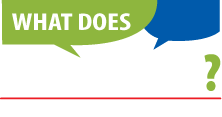Phrases starting with the letter: A B C D E F G H I J K L M N O P Q R S T U V W X Y Z
Definition of: Indo-European
(in′dō·y r′ə·pē′ən) noun
r′ə·pē′ən) noun
1. The largest family of languages in the world, assumed to have descended from an unrecorded common ancestor and comprising most of the languages of Europe and many languages of India and SW Asia. These languages are conventionally divided into two classifications, centum and satem (from the Latin and Avestan words for ‘hundred'), primarily according to the representation of the proto–Indo–European palatalized velar (k) as velar stops in the centum (mainly western) division, and as sibilants in the satem (mainly eastern) division. The principal centum subfamilies are Hellenic, Italic, Celtic, and Germanic. The principal satem subfamilies are Indo–Iranian, Armenian, Albanian, and Balto–Slavic. Among the lesser–known, extinct languages which have been established as belonging to the Indo–European family are Hittite and Tocharian. Cuneiform Hittite is grouped with the centum languages, while Hieroglyphic Hittite is thought by some to be a satem language. Tocharian is generally classed with the centum languages. See also THRACIAN, PHRYGIAN, LIGURIAN, SICEL, IL-LYRIAN, MESSAPIAN, and VENETIC.
2. The assumed prehistoric parent language of this family of languages: now fairly well reconstructed by linguists.
—adjective Of or pertaining to the Indo–European family of languages, or to the peoples speaking them. Also Aryan, Indo–Germanic.

Comment about this word, ask questions, or add new information about this topic: